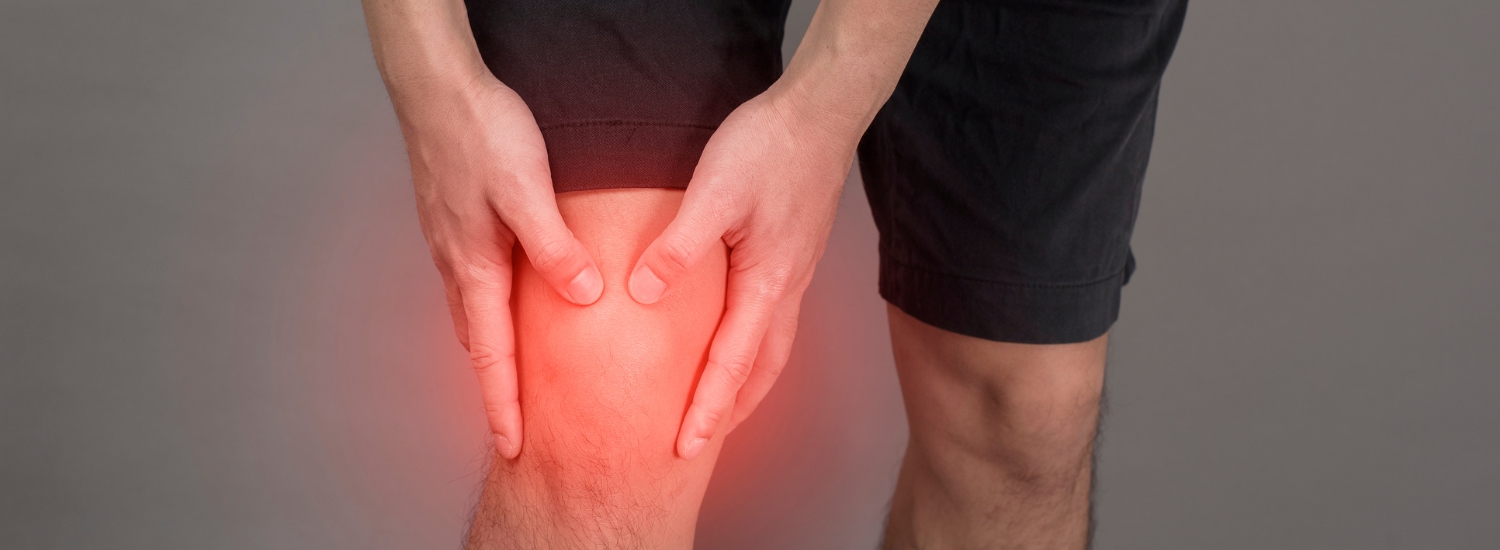Knee pain is a common issue that affects people of all ages and can significantly impact daily activities. Whether it’s from an injury, overuse, or underlying health conditions, knee pain can range from mild discomfort to severe pain that limits mobility. Identifying the cause of knee pain is crucial for determining the right treatment and finding relief. At Bryan Family Practice, we provide insights into the potential causes of knee pain and how to address them effectively.
Table of Contents:
- Common Causes of Knee Pain
- Risk Factors for Knee Pain
- How to Identify the Cause of Knee Pain
- Treatment Options for Knee Pain
- When to Seek Medical Help
- Final Thoughts
Common Causes of Knee Pain
There are various causes of knee pain, ranging from injuries to chronic conditions. Some of the most common include:
1. Osteoarthritis
Osteoarthritis is a degenerative joint disease that occurs when the cartilage in the knee wears down over time. This can lead to pain, swelling, and stiffness, especially in older adults.
2. Ligament Injuries
Injuries to the ligaments, such as an anterior cruciate ligament (ACL) tear, can result in knee pain, swelling, and instability. ACL injuries are often seen in athletes or individuals who engage in high-impact activities.
3. Tendonitis
Tendonitis is the inflammation of the tendons around the knee, often caused by overuse. It is common in athletes who perform repetitive movements or in individuals with physically demanding jobs.
4. Meniscus Tears
The meniscus is the cartilage that acts as a cushion between the bones in the knee. A tear in the meniscus can occur from sudden twisting or turning movements, causing pain, swelling, and limited range of motion.
5. Bursitis
Bursitis is the inflammation of the fluid-filled sacs (bursae) that cushion the knee joint. Repetitive motion or excessive pressure on the knee can cause bursitis, leading to pain and swelling.
6. Patellar Tendonitis
Also known as “jumper’s knee,” this condition occurs when the tendon connecting the kneecap to the shinbone becomes irritated or inflamed, often from repetitive jumping or squatting.
7. Gout
Gout is a type of arthritis caused by a buildup of uric acid crystals in the joint. It can lead to sudden, severe knee pain, redness, and swelling, especially in the big toe or knee.
8. Rheumatoid Arthritis
Rheumatoid arthritis is an autoimmune disease that causes inflammation in the joints, including the knees. Over time, this inflammation can damage the knee joint, leading to pain and stiffness.
Risk Factors for Knee Pain
Several factors can increase the risk of developing knee pain:
- Age: The risk of conditions like osteoarthritis increases with age.
- Obesity: Extra weight puts additional stress on the knees, increasing the risk of joint damage.
- Physical Activity: High-impact sports or jobs that involve repetitive knee movements can increase the risk of injury.
- Previous Injuries: Once you’ve experienced a knee injury, you may be at higher risk for future issues or chronic pain.
- Genetics: Some people are more predisposed to conditions like osteoarthritis due to their genetic makeup.
How to Identify the Cause of Knee Pain
Identifying the cause of knee pain involves understanding your symptoms and medical history. Consider the following factors:
- Onset: Did the pain start suddenly after an injury, or has it developed gradually over time?
- Location: Is the pain located in a specific area, such as the front of the knee, behind the knee, or along the sides?
- Movement: Does the pain worsen with certain movements, such as squatting, walking, or running?
- Swelling: Is there noticeable swelling around the knee joint?
- Stiffness: Do you have difficulty bending or straightening your knee?
- Pain Type: Is the pain sharp, dull, or throbbing? Does it come and go, or is it constant?
If you’re unsure of the cause, it’s important to consult with a healthcare provider at Bryan Family Practice for a thorough evaluation.
Treatment Options for Knee Pain
Treatment for knee pain varies depending on the underlying cause. Common options include:
- Rest and Ice: Reducing activity and applying ice to the affected area can help reduce inflammation and pain.
- Physical Therapy: Strengthening the muscles around the knee joint can help stabilize the knee and improve mobility.
- Medications: Over-the-counter pain relievers or anti-inflammatory medications can help manage pain and swelling.
- Braces or Supports: Wearing a knee brace or wrap can provide support and reduce strain on the joint.
- Surgery: In severe cases, surgery may be required to repair torn ligaments, remove damaged cartilage, or replace the knee joint.
When to Seek Medical Help
If knee pain persists or worsens despite rest and home care, or if you experience any of the following symptoms, seek medical attention:
- Severe pain or swelling
- Inability to bear weight on the knee
- Deformity or noticeable changes in the shape of the knee
- Limited range of motion
- Pain that occurs after a significant injury or trauma
Final Thoughts
Knee pain can significantly impact your quality of life, but with proper diagnosis and treatment, it is often manageable. Whether it’s from an injury, overuse, or a chronic condition, understanding the cause of knee pain is crucial for finding the most effective treatment. If you’re experiencing knee pain, don’t wait—schedule an appointment with a healthcare provider at Bryan Family Practice to start your journey toward pain relief and better mobility.
Disclaimer: This blog is for informational purposes only and does not substitute professional medical advice. Consult a healthcare provider for proper diagnosis and treatment. In case of an emergency, call 911 immediately.



